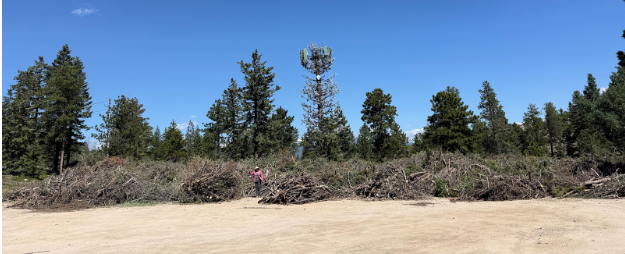CWPP Update – It could so easily be us…
- Jody Dickson
- Feb 1
- 3 min read
By Jody Dickson, CCCFPD CWPP Implementation Committee
At the time that I write this, 27 people are dead and almost 15,000 structures are destroyed in the fires outside of Los Angeles, California, which started in early January. It is a level of destruction that is hard to imagine, especially in the context of the number of people that are displaced due to the loss of their homes. These fires also follow the devastating fires in Maui in 2023, our own Marshall fire in 2021, Colorado’s worst ever fire season in 2020, the fires in Australia in 2019 – 2020, and the Camp Fire in Paradise, CA, in 2018. We continue to see one extreme fire after another, and the brutal truth is that what is happening in LA could so easily be happening to us.
While the causes of the fires in LA are still under investigation, we know that the rate that they spread was largely driven by high winds which is the same as the Maui and the Marshall fires. We know about wind up here in Coal Creek!! Just last fall, we saw winds that felled dozens of trees and damaged our homes. I remember being sand blasted when getting in and out of the bus at the intersections of Hwy 72 and 93. There were times when the bus driver could barely open the door to let us out! With our winds, what is happening in LA could so easily be us.
We also know that the ongoing drought is a factor in the LA fires. According to US Drought Monitor, LA County is in “extreme” drought conditions. We are currently in “moderate” drought conditions, but you can see the more severe drought creeping down deeper into the front range on the map. Our forests are overgrown and unhealthy, so they are susceptible to extreme fires like we are seeing in LA. This could so easily be us.
I remember after the Marshall fire thinking about the residents of Superior and Louisville. Most of us in Coal Creek Canyon are very aware of the risk of wildfire. Some of us think about it every day, and many of us regularly prepare for it. I felt bad for the people that were impacted by the Marshall fire as I suspect most of them weren’t aware that something like that could happen to them. I suspect the people in California are at least a little more aware of the risk because, like Colorado, fires occur across the state on a regular basis. The Camp Fire in Paradise, CA, where 85 people died and 18,000 structures were lost, is regularly used for its lessons learned in wildfire preparedness education even here in Colorado.
All of that said, I still have a lot of hope. Yes, there is A LOT to do, but as I shared above and before there are a lot of people digging into the work now. I’m grateful that our fire department made the investment in an updated CWPP to enable us to prioritize our work and get funding to get it done. We have more than one amazing organization working directly toward improving our wildfire conditions. We have several individuals that are regularly contributing to the effort. I’m inspired and amazed by the different people taking different approaches and doing different work toward making our community safer. The living example is in our Community Ambassadors. Each is looking at the CWPP recommendations of their specific plan unit, listening to members of the community, and moving toward doing what they can to make their specific neighborhood safer… which helps the neighboring plan units too!
It reminds me of the communities around the world that just decide to be purposeful in preparing for whatever their local risk is: climate change, flood, energy dependence, wildfire, etc. When a community comes together and decides it wants a different outcome for itself, it is amazing what can be achieved. We can move mountains! (Pardon the pun!) Everything we do helps. Most wildfires are not in extreme conditions, so through our mitigation work we give our firefighters a chance to protect our neighbors, our homes, our wildlife and our beloved forest. It doesn’t have to be us.
We cannot predict when our fire will be, so the sooner we get our work done the better. If you haven’t already, start today. Contact your CWPP Community Ambassadors and your neighbors. Read the CWPP and learn about the specific needs of your community. We have many related resources available on our website at www.CoalCreekCWPP.org. If you have any questions please contact your Community Ambassador or us at CWPPforCCC@gmail.com. Thank you, again, for your fantastic support and activity to get this work done.


Comments